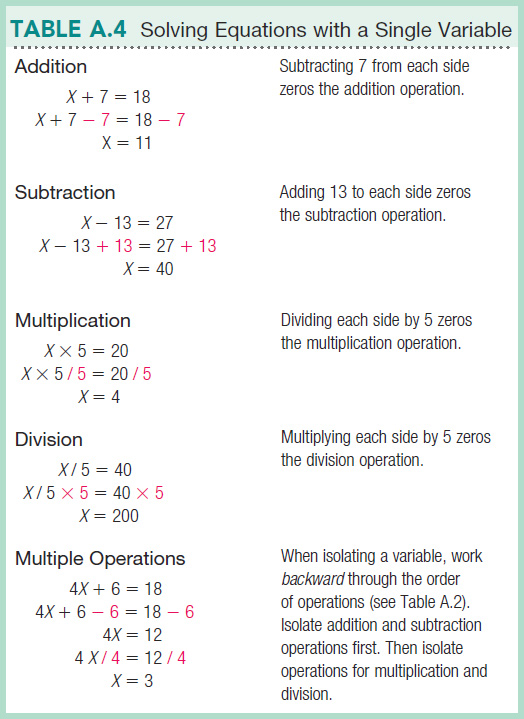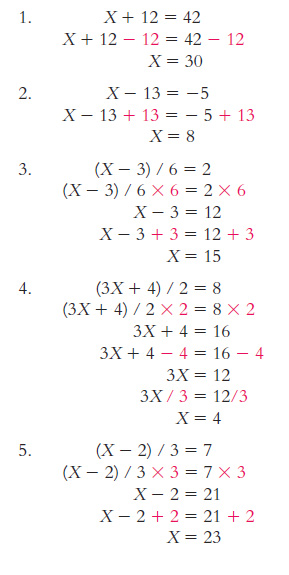A.5 Solving Equations with a Single Unknown Variable
When solving equations with an unknown variable, isolate the unknown variable on one side of the equation. By isolating the variable, you free up the other side of the equation so you can solve it to a single number, which gives you the value of the variable.
To isolate the variable, add, subtract, multiply, or divide each side of the equation to solve the operations on the side of the equation that contains the variable (Table A.4).
A-

Solving Equations With A Single Unknown Variable: Worked Examples

Self-Quiz #6: Solving Equations with a Single Unknown Variable
(Answers to this quiz can be found in section A-6.)
- 7X = 42
X = - 87 − X + 16 = 57
X = - X − 17 = −6
X = - 5X − 4 = 21
X = - X − 10 = −4
X = - X/8 = 20
X = - (X + 17)/3 = 10
X = - 2(X + 4) = 24
X = - X(3 + 12) − 20 = 40
X = - 34 − X/6 = 27
X =